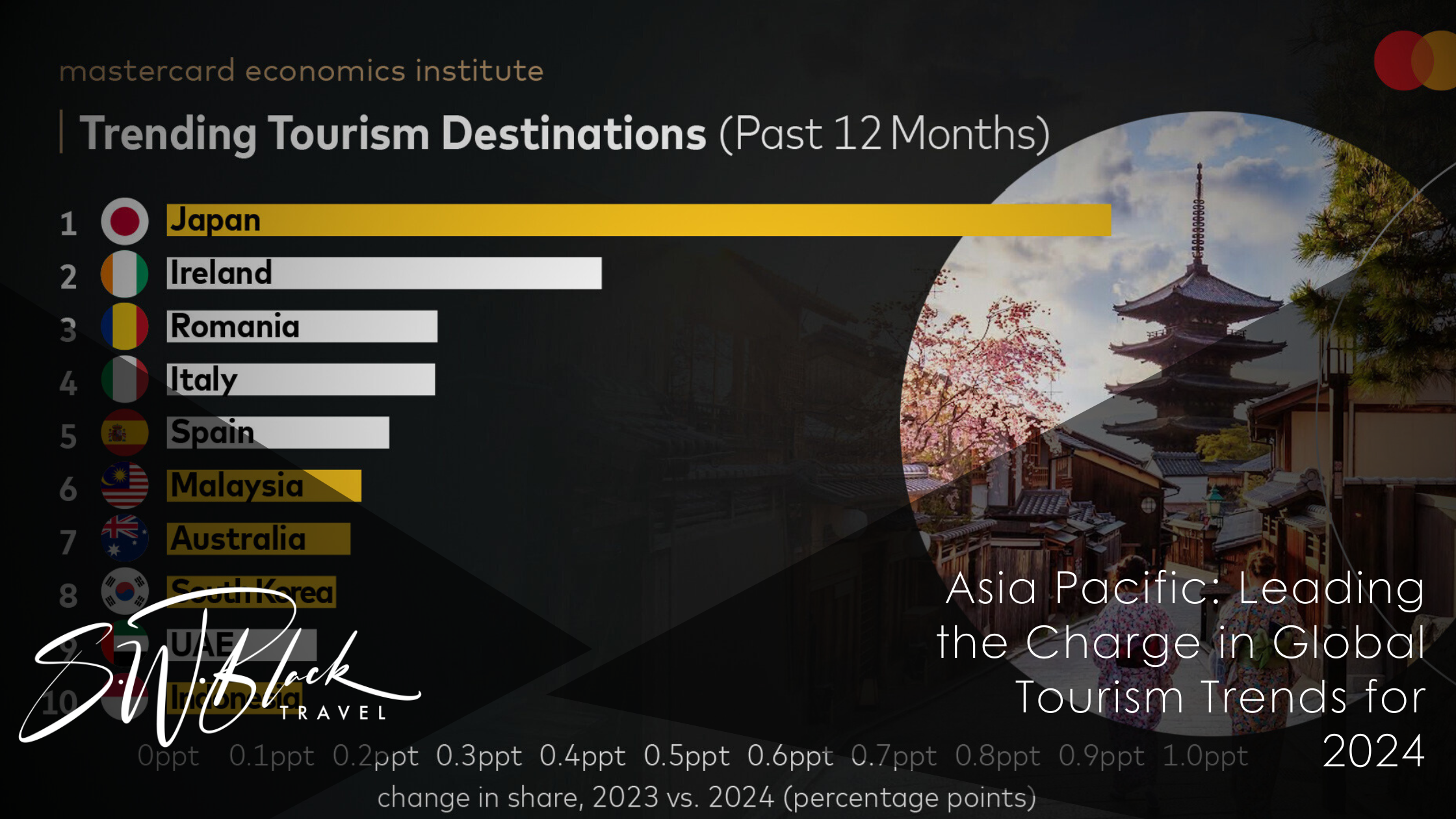The global travel sector is breaking boundaries in 2024, with Asia Pacific (APAC) emerging as a frontrunner in the tourism industry. The Mastercard Economics Institute’s latest report, "Travel Trends 2024: Breaking Boundaries," reveals fascinating insights into the evolving landscape of travel across 74 markets, including 13 in the APAC region. The report highlights key trends that are shaping the future of travel and underscores APAC’s significant role in this transformation.
APAC: Home to Top Trending Destinations
According to the Mastercard Economics Institute, APAC is now home to half of the world’s top 10 trending tourism destinations. Japan leads the pack as the number one trending destination globally, with a record-breaking 3,081,600 international arrivals in March 2024 alone. This surge in tourism is driven by the weak yen, which has made Japan an incredibly attractive destination for international travellers.

David Mann, Chief Economist for APAC at Mastercard, notes, "Consumers in the Asia Pacific region have an intense desire and willingness to travel and are becoming increasingly savvy to ensure they get the best value and unforgettable experiences from their trips." This sentiment is reflected in the region’s robust tourism growth, with destinations like Bangkok, Kuala Lumpur, and Perth being top choices for travellers from Singapore.
Chinese Mainland and Indian Travel Surge
The Chinese Mainland is witnessing a significant rebound in domestic tourism, with air passenger traffic fully normalised and even exceeding 2019 levels. Outbound travel from the Chinese Mainland continues to recover, now at 80% of 2019 levels. This recovery is expected to gain further momentum in 2024, supported by visa exemptions and increased international flight capacity.
Meanwhile, India is experiencing a historic surge in travel, with more Indians travelling internationally than ever before. In the first three months of 2024, 97 million passengers travelled through Indian airports. This trend is bolstered by a burgeoning middle class, additional route capacity, and a strong desire to explore new destinations.
Longer Stays and Experience-Focused Travel
Tourists in APAC are extending their trips by an average of 1.2 days, bringing the total duration to 7.4 days, compared to 6.1 days in 2019. This trend is driven by the affordability of destinations, warm weather, and favourable exchange rates. Longer stays generally translate to more spending per trip, benefiting local economies.
Globally, travellers continue to prioritise experiences over material goods. Spending on experiences and nightlife has reached 12% of tourism sales, the highest point in at least five years. Australian tourists lead the charge, spending 19% of their travel budget on experiences and nightlife, significantly higher than the global average of 12%.
Casual Vibes and Luxury Delights
While casual fashion and dining continue to dominate, there are notable exceptions where luxury experiences offer exceptional value. Luxury fashion sales have soared in Japan and Hong Kong SAR, driven by robust inbound tourism and favourable exchange rates. In contrast, Australia, India, and Thailand are seeing a burgeoning fine dining scene, with premium dining outperforming casual dining in these regions. To know more about the full Travel 2024: Breaking Boundaries report, click here.
A New Era of Travel in APAC
The Mastercard Economics Institute's report underscores the dynamic nature of the travel industry in 2024. APAC’s leadership in trending destinations, the resurgence of travel in the Chinese Mainland and India, and the growing preference for experiences over material goods are shaping a new era of tourism.
For more insights and the latest trends in the travel industry, reach out to a travel adviser at S.W. Black Travel. They can help you navigate the evolving landscape and ensure your journey is perfectly tailored to your preferences.


Comments